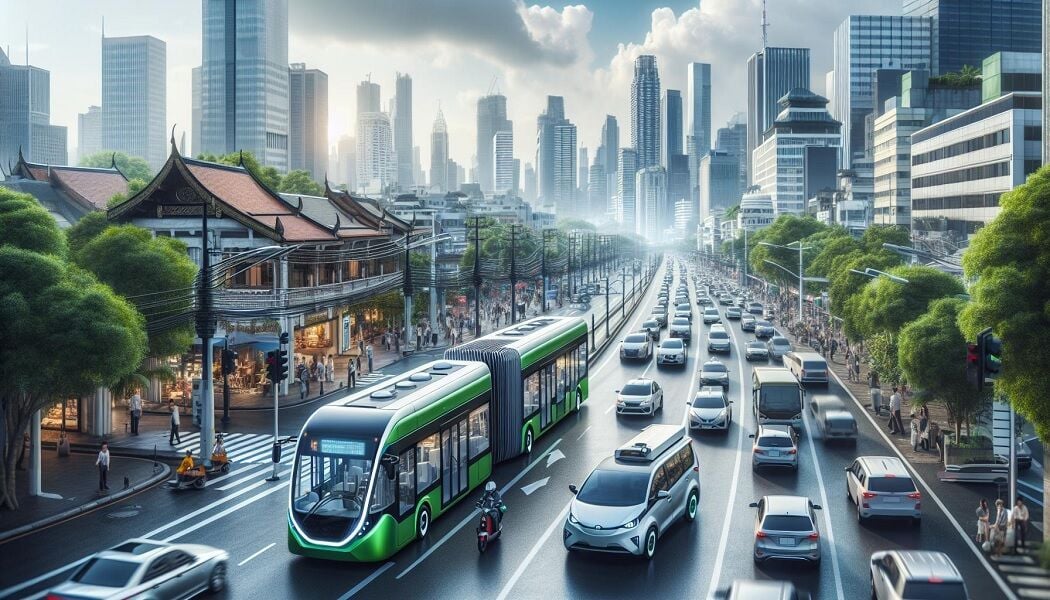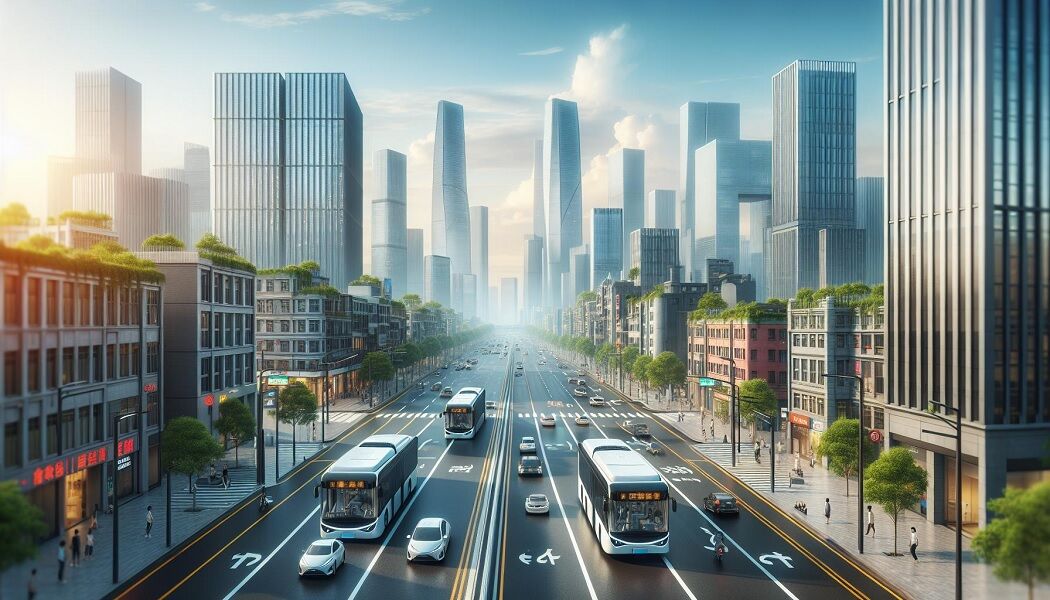How cars fuel PM2.5 pollution & what we can do about it

When you think about air pollution, vehicles might not be the first thing that comes to mind. Yet, they play a significant role in the amount of PM2.5, those tiny particulate matters that can wreak havoc on your health. Research reveals that both diesel and gasoline-powered cars contribute to PM2.5 levels, but the impact varies depending on the vehicle’s age and the sulfur content in the fuel and oil.
Understanding how these emissions work and their effects can help you make informed decisions about your travel habits. Whether it’s choosing a newer model car or supporting policies for cleaner fuels, your choices can influence the air quality around you. Let’s dive deeper into how vehicles contribute to PM2.5 pollution and what it means for you and the environment.
The role of vehicles on PM2.5
When diving deep into the impact vehicles have on PM2.5 levels, it’s essential to grasp how both diesel and gasoline engines contribute to this form of air pollution. Your choice of vehicle matters more than you might think when it comes to air quality.
Diesel vehicles, known for their efficiency, unfortunately, play a significant role in PM2.5 emissions. Studies reveal that under specific sulfur sensitivity scenarios, PM2.5 emission factors from these engines saw reductions ranging from 1-67%, with an average decrease of 34%. This variance chiefly depends on the vehicle’s model year, hinting that newer diesel models tend to be cleaner.
Gasoline-powered cars are not off the hook either. Their contribution to PM2.5 pollution shifts with the sulfur content of their fuel, too. In certain scenarios, emission estimates from gasoline engines dropped between 0.36-62%, averaging a 22% decrease. Again, vehicles of newer make demonstrated a greater reduction in emissions.
This relationship between sulfur content and PM2.5 emissions underlines the crucial role of fuel quality in vehicular pollution. Simply put, lower sulfur content in both fuel and lubricating oils equates to fewer PM2.5 emissions, making a compelling case for supporting policies that promote cleaner fuels.
To put the health implications into perspective, the presence of PM2.5 in the air poses risks that extend from mild respiratory problems to severe conditions like lung cancer. The research underscores the increased lifetime cancer risk tied to PM2.5, particularly after episodes of intense pollution, such as biomass burning.
Navigating through the maze of vehicle emissions and their effects on air quality can be daunting. Yet, understanding the dynamics of PM2.5 pollution empowers you to make informed decisions. Whether it’s opting for a newer vehicle model or advocating for stricter fuel quality regulations, your choices can have a direct impact on reducing air pollution levels.
Sources of PM2.5 emissions from vehicles


Understanding the role of vehicles in PM2.5 emissions is crucial for mitigating air pollution. Vehicles contribute to PM2.5 in several ways, and it’s important to grasp how each source affects air quality.
Combustion of fossil fuels
When you drive a vehicle that runs on diesel or petrol, the combustion of these fossil fuels is a primary source of PM2.5. This process releases a variety of pollutants into the air, including both direct PM2.5 particles and gases that later transform into PM2.5. This occurs as nitrogen oxides, sulfur oxides, and volatile organic compounds react in the atmosphere, often with sunlight acting as a catalyst. Sadly, most of these harmful pollutants come straight from the exhaust, with gasoline evaporation during refuelling, and leaks from the fuel system also contributing. It’s vital to note that both old and new vehicles play a part, but older models, particularly those running on lower-quality fuels, tend to emit more.
Brake and tyre wear
Apart from the exhaust emissions, vehicles contribute to PM2.5 through non-exhaust sources like brake and tyre wear. Every time you brake, tiny particles wear off the brake pads and tyres, adding to air pollution. Factors that accelerate tyre wear include the vehicle’s weight, tyre type, and driving style. Aggressive driving with rapid acceleration, braking, and turning, significantly increases tyre wear. Electric vehicles (EVs), often heavier than their petrol counterparts, might suggest higher tyre wear. However, EVs use regenerative braking systems that convert much of the vehicle’s kinetic energy back into electrical energy, thereby lessening brake pad wear. This innovation not only reduces the amount of pollutants released but also showcases how vehicular technology can adapt to mitigate environmental impact.
By understanding these sources and how they contribute to PM2.5 emissions, you’re better equipped to make choices that can help reduce air pollution. Whether it’s choosing a cleaner vehicle, altering driving habits, or supporting policies for cleaner fuels and emissions standards, your actions can significantly impact air quality.
Impact of PM2.5 from vehicles on health


When delving into the role of vehicles on PM2.5, it’s crucial to understand how this particular kind of pollution affects your health. Vehicles, as major contributors to PM2.5 emissions, play a significant part in the air quality issues facing urban environments today. Each breath you take in a polluted city could be harmful due to these microscopic particles.
Respiratory diseases
Your respiratory system is the first line of defence against airborne pollutants. However, PM2.5 from vehicles sneaks past these defences, causing a myriad of respiratory issues. Research shows that exposure to these fine particles exacerbates conditions like asthma, leading to more frequent and severe attacks. Simple acts, such as replacing your car with a cleaner alternative or opting for public transportation, can significantly cut down the PM2.5 levels in the air, making a direct impact on respiratory health in your community.
Cardiovascular issues
But it’s not just your lungs that suffer. Your heart bears the brunt too. PM2.5 particles, due to their minuscule size, can enter your bloodstream, leading to cardiovascular issues. Studies link long-term exposure to these particles with an increased risk of heart attacks and strokes. Surprisingly, even short-term exposure isn’t without risk, potentially triggering acute cardiovascular events. Therefore, advocating for stricter emissions standards and supporting policies that promote cleaner fuels and electric vehicles can play a pivotal role in reducing the cardiovascular health risks associated with vehicle-generated PM2.5.
By understanding the detrimental health effects of PM2.5 from vehicles, you’re better equipped to make choices that not only benefit your health but also contribute to a cleaner, healthier environment for all.
Strategies to reduce PM2.5 emissions from vehicles


In tackling the role of vehicles in PM2.5 pollution, it’s crucial to explore effective strategies for reducing emissions. With the right approaches, you can significantly mitigate the adverse effects vehicles have on air quality.
Adoption of electric vehicles
Switching to electric vehicles (EVs) stands out as a powerful move towards cleaner air. Unlike traditional cars, EVs emit no PM2.5 pollutants directly into the atmosphere. By opting for an electric vehicle, you’re cutting down on the emissions responsible for worsening urban air quality. Moreover, as electricity generation becomes greener, the overall environmental impact of EVs continues to decrease. Transitioning to electric vehicles not only aligns with global sustainability goals but also shields you and your community from harmful air pollutants.
Improvement in public transport systems
Enhancing public transport systems offers a double win for reducing PM2.5 emissions and easing city congestion. By investing in cleaner, more efficient public transport options, such as electric buses and trains, cities can significantly lower the volume of individual vehicles on the road. This shift not only cuts down on pollutants but also makes urban areas more accessible and livable. Encouraging the use of public transport through convenient scheduling, affordable fares, and widespread routes ensures a substantial decrease in the reliance on personal, polluting vehicles.
Policy interventions
Strategic policy interventions are key to steering both individuals and industries toward practices that reduce PM2.5 emissions. Implementing stricter vehicle emission standards pushes manufacturers to innovate cleaner engine technologies. Similarly, offering incentives for purchasing electric vehicles and using public transportation can motivate a shift away from diesel and petrol cars. Policies aimed at retiring older, more polluting vehicles from the roads also play a crucial role. It’s through these targeted interventions that significant strides can be made in improving air quality and protecting public health from the dangers of PM2.5 pollution.
Implementing these strategies requires concerted effort from individuals, governments, and industries alike. It’s through adopting electric vehicles, enhancing public transport systems, and enacting and adhering to stricter policies that we can significantly reduce the role of vehicles on PM2.5 emissions, steering towards healthier urban environments for all.
When driving in Thailand, always stay alert and respect local traffic laws. Do wear your seatbelt at all times and ensure all passengers do the same. Do familiarize yourself with Thai road signs and keep a valid driver’s license with you. Don’t forget to carry your passport or a copy for identification. Always check your vehicle’s condition, especially brakes and lights, before hitting the road. Don’t drive under the influence of alcohol or drugs; the legal limits are strict and penalties severe. Do give way to pedestrians and be cautious of motorbikes, often weaving through traffic. Don’t use your mobile phone without a hands-free device while driving. Remember, patience and courtesy go a long way in ensuring a safe journey on Thailand’s roads.
Parts of this article, including images, may have been generated using AI tools before an editor reviewed it.

































